Television (TV), sometimes shortened to tele or telly, is a telecommunication medium used for transmitting moving images in monochrome (black and white), or in colour, and in two or three dimensions and sound. The term can refer to a television set, a television program ("TV show"), or the medium of television transmission. Television is a mass medium for advertising, entertainment and news.
Television became available in crude experimental forms in the late 1920s, but it would still be several years before the new technology would be marketed to consumers. After World War II, an improved form of black-and-white TV broadcasting became popular in the United States and Britain, and television sets became commonplace in homes, businesses, and institutions. During the 1950s, television was the primary medium for influencing public opinion. In the mid-1960s, color broadcasting was introduced in the US and most other developed countries. The availability of multiple types of archival storage media such as Betamax, VHS tape, local disks, DVDs, flash drives, high-definition Blu-ray Discs, and cloud digital video recorders has enabled viewers to watch pre-recorded material—such as movies— at home on their own time schedule. For many reasons, especially the convenience of remote retrieval, the storage of television and video programming now occurs on the cloud. At the end of the first decade of the 2000s, digital television transmissions greatly increased in popularity. Another development was the move from standard-definition television (SDTV) (576i, with 576 interlaced lines of resolution and 480i) to high-definition television (HDTV), which provides a resolution that is substantially higher. HDTV may be transmitted in various formats: 1080p, 1080i and 720p. Since 2010, with the invention of smart television, Internet television has increased the availability of television programs and movies via the Internet through streaming video services such as Netflix, Amazon Video, iPlayer, Hulu, Roku and Chromecast.
In 2013, 79% of the world's households owned a television set. The replacement of early bulky, high-voltage cathode ray tube (CRT) screen displays with compact, energy-efficient, flat-panel alternative technologies such as LCDs (both fluorescent-backlit and LED), OLED displays, and plasma displays was a hardware revolution that began with computer monitors in the late 1990s. Most TV sets sold in the 2000s were flat-panel, mainly LEDs. Major manufacturers announced the discontinuation of CRT, DLP, plasma, and even fluorescent-backlit LCDs by the mid-2010s. In the near future, LEDs are expected to be gradually replaced by OLEDs. Also, major manufacturers have announced that they will increasingly produce smart TVs in the mid-2010s. Smart TVs with integrated Internet and Web 2.0 functions became the dominant form of television by the late 2010s.
Television signals were initially distributed only as terrestrial television using high-powered radio-frequency transmitters to broadcast the signal to individual television receivers. Alternatively television signals are distributed by coaxial cable or optical fiber, satellite systems and, since the 2000s via the Internet. Until the early 2000s, these were transmitted as analog signals, but a transition to digital television is expected to be completed worldwide by the late 2010s. A standard television set is composed of multiple internal electronic circuits, including a tuner for receiving and decoding broadcast signals. A visual display device which lacks a tuner is correctly called a video monitor rather than a television.
Screenplay
The word television comes from Ancient Greek ???? (tèle), meaning 'far', and Latin visio, meaning 'sight'. The first documented usage of the term dates back to 1900, when the Russian scientist Constantin Perskyi used it in a paper that he presented in French at the 1st International Congress of Electricity, which ran from 18 to 25 August 1900 during the International World Fair in Paris. The Anglicised version of the term is first attested in 1907, when it was still "...a theoretical system to transmit moving images over telegraph or telephone wires". It was "...formed in English or borrowed from French télévision." In the 19th century and early 20th century, other "...proposals for the name of a then-hypothetical technology for sending pictures over distance were telephote (1880) and televista (1904)." The abbreviation "TV" is from 1948. The use of the term to mean "a television set" dates from 1941. The use of the term to mean "television as a medium" dates from 1927. The slang term "telly" is more common in the UK. The slang term "the tube" or the "boob tube" refers to the bulky cathode ray tube used on most TVs until the advent of flat-screen TVs. Another slang term for the TV is "idiot box".
Mechanical
Facsimile transmission systems for still photographs pioneered methods of mechanical scanning of images in the early 19th century. Alexander Bain introduced the facsimile machine between 1843 and 1846. Frederick Bakewell demonstrated a working laboratory version in 1851. Willoughby Smith discovered the photoconductivity of the element selenium in 1873. As a 23-year-old German university student, Paul Julius Gottlieb Nipkow proposed and patented the Nipkow disk in 1884. This was a spinning disk with a spiral pattern of holes in it, so each hole scanned a line of the image. Although he never built a working model of the system, variations of Nipkow's spinning-disk "image rasterizer" became exceedingly common. Constantin Perskyi had coined the word television in a paper read to the International Electricity Congress at the International World Fair in Paris on 24 August 1900. Perskyi's paper reviewed the existing electromechanical technologies, mentioning the work of Nipkow and others. However, it was not until 1907 that developments in amplification tube technology by Lee de Forest and Arthur Korn, among others, made the design practical.
The first demonstration of the live transmission of images was by Georges Rignoux and A. Fournier in Paris in 1909. A matrix of 64 selenium cells, individually wired to a mechanical commutator, served as an electronic retina. In the receiver, a type of Kerr cell modulated the light and a series of variously angled mirrors attached to the edge of a rotating disc scanned the modulated beam onto the display screen. A separate circuit regulated synchronization. The 8x8 pixel resolution in this proof-of-concept demonstration was just sufficient to clearly transmit individual letters of the alphabet. An updated image was transmitted "several times" each second. In 1921 Edouard Belin sent the first image via radio waves with his belinograph.
In 1911, Boris Rosing and his student Vladimir Zworykin created a system that used a mechanical mirror-drum scanner to transmit, in Zworykin's words, "very crude images" over wires to the "Braun tube" (cathode ray tube or "CRT") in the receiver. Moving images were not possible because, in the scanner: "the sensitivity was not enough and the selenium cell was very laggy".
By the 1920s, when amplification made television practical, Scottish inventor John Logie Baird employed the Nipkow disk in his prototype video systems. On 25 March 1925, Baird gave the first public demonstration of televised silhouette images in motion, at Selfridge's Department Store in London. Since human faces had inadequate contrast to show up on his primitive system, he televised a ventriloquist's dummy named "Stooky Bill", whose painted face had higher contrast, talking and moving. By 26 January 1926, he demonstrated the transmission of the image of a face in motion by radio. This is widely regarded as the first television demonstration. The subject was Baird's business partner Oliver Hutchinson. Baird's system used the Nipkow disk for both scanning the image and displaying it. A bright light shining through a spinning Nipkow disk set with lenses projected a bright spot of light which swept across the subject. A Selenium photoelectric tube detected the light reflected from the subject and converted it into a proportional electrical signal. This was transmitted by AM radio waves to a receiver unit, where the video signal was applied to a neon light behind a second Nipkow disk rotating synchronized with the first. The brightness of the neon lamp was varied in proportion to the brightness of each spot on the image. As each hole in the disk passed by, one scan line of the image was reproduced. Baird's disk had 30 holes, producing an image with only 30 scan lines, just enough to recognize a human face. In 1927, Baird transmitted a signal over 438 miles (705 km) of telephone line between London and Glasgow.
In 1928, Baird's company (Baird Television Development Company/Cinema Television) broadcast the first transatlantic television signal, between London and New York, and the first shore-to-ship transmission. In 1929, he became involved in the first experimental mechanical television service in Germany. In November of the same year, Baird and Bernard Natan of Pathé established France's first television company, Télévision-Baird-Natan. In 1931, he made the first outdoor remote broadcast, of The Derby. In 1932, he demonstrated ultra-short wave television. Baird's mechanical system reached a peak of 240-lines of resolution on BBC television broadcasts in 1936, though the mechanical system did not scan the televised scene directly. Instead a 17.5mm film was shot, rapidly developed and then scanned while the film was still wet.
An American inventor, Charles Francis Jenkins, also pioneered the television. He published an article on "Motion Pictures by Wireless" in 1913, but it was not until December 1923 that he transmitted moving silhouette images for witnesses; and it was on 13 June 1925, that he publicly demonstrated synchronized transmission of silhouette pictures. In 1925 Jenkins used the Nipkow disk and transmitted the silhouette image of a toy windmill in motion, over a distance of five miles, from a naval radio station in Maryland to his laboratory in Washington, D.C., using a lensed disk scanner with a 48-line resolution. He was granted U.S. Patent No. 1,544,156 (Transmitting Pictures over Wireless) on 30 June 1925 (filed 13 March 1922).
Herbert E. Ives and Frank Gray of Bell Telephone Laboratories gave a dramatic demonstration of mechanical television on 7 April 1927. Their reflected-light television system included both small and large viewing screens. The small receiver had a 2-inch-wide by 2.5-inch-high screen. The large receiver had a screen 24 inches wide by 30 inches high. Both sets were capable of reproducing reasonably accurate, monochromatic, moving images. Along with the pictures, the sets received synchronized sound. The system transmitted images over two paths: first, a copper wire link from Washington to New York City, then a radio link from Whippany, New Jersey. Comparing the two transmission methods, viewers noted no difference in quality. Subjects of the telecast included Secretary of Commerce Herbert Hoover. A flying-spot scanner beam illuminated these subjects. The scanner that produced the beam had a 50-aperture disk. The disc revolved at a rate of 18 frames per second, capturing one frame about every 56 milliseconds. (Today's systems typically transmit 30 or 60 frames per second, or one frame every 33.3 or 16.7 milliseconds respectively.) Television historian Albert Abramson underscored the significance of the Bell Labs demonstration: "It was in fact the best demonstration of a mechanical television system ever made to this time. It would be several years before any other system could even begin to compare with it in picture quality."
In 1928, WRGB, then W2XB, was started as the world's first television station. It broadcast from the General Electric facility in Schenectady, NY. It was popularly known as "WGY Television". Meanwhile, in the Soviet Union, Léon Theremin had been developing a mirror drum-based television, starting with 16 lines resolution in 1925, then 32 lines and eventually 64 using interlacing in 1926. As part of his thesis, on 7 May 1926, he electrically transmitted, and then projected, near-simultaneous moving images on a five-foot square screen. By 1927 he achieved an image of 100 lines, a resolution that was not surpassed until May 1932 by RCA, with 120 lines. On 25 December 1926, Kenjiro Takayanagi demonstrated a television system with a 40-line resolution that employed a Nipkow disk scanner and CRT display at Hamamatsu Industrial High School in Japan. This prototype is still on display at the Takayanagi Memorial Museum in Shizuoka University, Hamamatsu Campus. His research in creating a production model was halted by the United States after Japan lost World War II.
Because only a limited number of holes could be made in the disks, and disks beyond a certain diameter became impractical, image resolution on mechanical television broadcasts was relatively low, ranging from about 30 lines up to 120 or so. Nevertheless, the image quality of 30-line transmissions steadily improved with technical advances, and by 1933 the UK broadcasts using the Baird system were remarkably clear. A few systems ranging into the 200-line region also went on the air. Two of these were the 180-line system that Compagnie des Compteurs (CDC) installed in Paris in 1935, and the 180-line system that Peck Television Corp. started in 1935 at station VE9AK in Montreal. The advancement of all-electronic television (including image dissectors and other camera tubes and cathode ray tubes for the reproducer) marked the beginnin
Watch movie Television online on Amazon
Watch movie Television online
Watch The Movie On Prime99.9 FM-Nothing is 100% Full HD Movie Download

Raja Babu (Telugu) Full HD Movie Download
.jpg)
Mawaali Full HD Movie Download
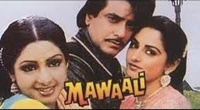
Thokar (1974) Full HD Movie Download
.jpg)
Khazana (1987) Full HD Movie Download
.jpg)
Bikhare Moti (1971) Full HD Movie Download
.jpg)
Idhaya Thirudan Full HD Movie Download

Gaalipata Full HD Movie Download

Meri Marzi (2011) Full HD Movie Download
.jpg)
Vat Pahte Sunechi Full HD Movie Download
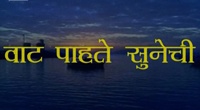
Gadvasu Pindam Full HD Movie Download
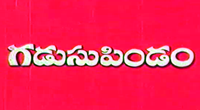
Thulli Thirinda Kaalam Full HD Movie Download

Return Of Khuda Gawah Full HD Movie Download
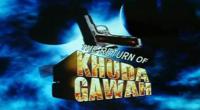
Kattumarakkaran Full HD Movie Download

Bat Hunter Full HD Movie Download

Veta Full HD Movie Download
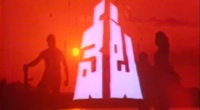
Mandupatara Full HD Movie Download
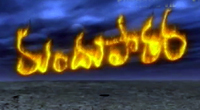
Darithapina Mahnishi Full HD Movie Download
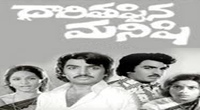
Devi Nagamma Full HD Movie Download
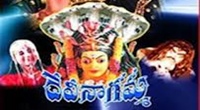
Rambha Neeku Urvasi Naaku Full HD Movie Download

Chak De India Full HD Movie Download

Download latest Movie from bollywood
- 1> baaghi 3
- 2> THE SKY IS PINK MOVIE FULL STORY AND REVIEW
- 3> Luka Chuppi
- 4> TO ALL THE BOYS I’VE LOVED BEFORE
- 5> Kabir Singh
- 6> Street Dancer 3D
- 7> Simmba
- 8> Gone Girl
- 9> The Girl Who Lived
- 10> Ludo
- 11> DILWALE DULHANIA LE JAYENGE
- 12> GUILTY
- 13> The Godfather
- 14> Adventures of Rusty
- 15> Sooryavanshi
- 16> Satyameva Jayate 2
- 17> Thappad
- 18> Bhool Bhulaiyaa 2
- 19> KGFChapter 2
- 20> Mardaani 2
- 21> Pinjar
- 22> Shivaji maharaj
- 23> Ek Villian 2
- 24> Hungama 2
- 25> Divergent
- 26> Mumbai Saga
- 27> The Internship
- 28> HIT (telugu)
- 29> Panga
- 30> The perfect date
- 31> 16 December
- 32> Gopala Gopala (Telugu)
- 33> Brahmastra
- 34> Gangubai Kathiawadi
- 35> Manmadhudu
- 36> Nenu local
- 37> Mahanati
- 38> Shatamanam bavathi
- 39> Lagaan
- 40> After
- 41> MOM
- 42> Shamshera
- 43> Raguvaran BTech
- 44> Khakee
- 45> The villain
- 46> OM
- 47> Mr. perfect
- 48> Bueatifull mind
- 49> Hichki
- 50> Gabbar Singh
- 51> Jogi
- 52> Before Sunrise
- 53> Before Sunset
- 54> Before Midnight
- 55> The Big Bull
- 56> Top Gun: Maverick
- 57> The Purge
- 58> The Sky is Pink
- 59> Laxmmi Bomb
- 60> Sadak 2
- 61> Sufna
- 62> Prithviraj
- 63> PK
- 64> Coolie No 1(2020)
- 65> Black Widow
- 66> Dear Zindagi
- 67> Dil Bechara
- 68> PHIR HERA PHERI
- 69> WAR
- 70> Dostana
- 71> RRR: Roudram Ranam Rudhiram
- 72> Maidan
- 73> Dabbang 3
- 74> Chhalaang
- 75> life as we know it
- 76> SherShaah
- 77> Sandeep Aur Pinky Faraar
- 78> Event Horizon
- 79> 83
- 80> Radhe: Your Most Wanted Bhai
- 81> Gunjan Saxena: The Kargil Girl
- 82> Mr India
- 83> Vivah
- 84> Anokha Bandhan
- 85> Ghost
- 86> Bhoot: Part One - The Haunted Ship
- 87> Haseen Dilruba
- 88> Laal Singh Chaddha
- 89> Qismat
- 90> Rajput
- 91> Drive
- 92> Dil Chahta Hai
- 93> Dil Ki Baazi
- 94> Dil Ka Rishta
- 95> Teesri Manzil
- 96> Dil
- 97> Love Aaj Kal
- 98> Khaali Peeli
- 99> Bunty Aur Babli 2
- 100> Atrangi Re
- 101> Gulabo Sitabo
- 102> Jodi
- 103> Suraj Pe Mangal Bhari
- 104> Deewana
- 105> Attack
- 106> Sardar Udham Singh
- 107> Toofan
- 108> THE LOVEBIRDS
- 109> Jersey
- 110> Ginny Weds Sunny
- 111> Thalaivi
- 112> Shiddat
- 113> Angels vs Zombies
- 114> Koi Mil Gya
- 115> Thank God
- 116> Bhuj: The Pride of India
- 117> Hum Aapke Hain Kaun
- 118> The Platform
- 119> Bird Box
- 120> Roohi Afzana
- 121> Torbaaz
- 122> Nikamma
- 123> World War Z
- 124> Extraction
- 125> Train to Busan
- 126> Life of Pi
- 127> SHAADI MEIN JROOR AANA
- 128> Himmat Aur Mehnat
- 129> To All The Boys: P.S. I Still Love You
- 130> Mimi
- 131> Good Newwz
- 132> Shubh Mangal Zyada Saavdhan
- 133> Raabta
- 134> Harry Potter and the Philosopher's Stone
- 135> Harry Potter and the Chamber of Secrets
- 136> Chhapaak
- 137> War of the Worlds
- 138> Harry Potter and the Prisoner of Azkaban
- 139> Harry Potter and the Goblet of Fire
- 140> MURDER MYSTERY
- 141> Shakuntala Devi
- 142> Bachchan Pandey
- 143> Jayeshbhai Jordar
- 144> Sheer Qorma
- 145> Saina
- 146> 'O' Pushpa I hate tears
- 147> Kedarnath
- 148> MS Dhoni The Untold Story
- 149> Chhichhore
- 150> Badhaai Ho
- 151> Unstoppable
- 152> Oz the Great And Powerful
- 153> The Girl on the Train
- 154> Haathi Mere Saathi 2020
- 155> The Conjuring: The Devil Made Me Do It
- 156> Gandhi Se Pehle Gandhi
- 157> The Song of Scorpions
- 158> Srimanthudu
- 159> Hello Guru Prema Kosame
- 160> Beauty and The Beast
- 161> Black Panther
- 162> Charlie and the Chocolate Factory
- 163> Bole Chudiyan
- 164> Fidaa
- 165> Duvvada Jagannadham
- 166> Bruce Lee: The Fighter
- 167> Hyper
- 168> Yaara
- 169> Red (2020)
- 170> Shivam
- 171> That Is Mahalakshmi
- 172> Nishabdham
- 173> Aashram 2020 web series
- 174> Laxmii
- 175> Mismatched
- 176> STUDENT OF THE YEAR 2
- 177> NAIL POLISH
- 178> Ramprasad Ki Tehrvi
- 179> KAAGAZ
- 180> 12 o Clock
- 181> The Power
- 182> bolo hau
- 183> Tribhanga
- 184> JAMUN
- 185> Madam Chief Minister
- 186> Maasaab
- 187> Aadhaar
- 188> Tanhaji
- 189> Bhaagi 3
- 190> Bhootnath
- 191> MALANG
- 192> Jai Mummy Di
- 193> Haathi Mere Saathi 2021
- 194> Shakeela
- 195> Unpaused
- 196> Annayya
- 197> Vamsoddharakudu
- 198> Mrugaraju
- 199> Narasimha Naidu
- 200> Sankranti
- 201> Manasu Maata Vinadhu
- 202> Anjaane
- 203> Apaharan
- 204> Bachke Rehna Re Baba
- 205> Bewafaa
- 206> Roohi
- 207> Radhe
- 208> Zindagi Khoobsoorat Hai
- 209> Yeh Mohabbat Hai
- 210> Yeh Kya Ho Raha Hai?
- 211> The Tomorrow War
- 212> DehradunDiary
- 213> Meri Shaadi Karaoo
- 214> Matruu Ki Bijlee Ka Mandola
- 215> No One Killed Jesica
- 216> Aag Ka Goola
- 217> Eight Million Dollars
- 218> Three Hundred
- 219> Cats and Dog
- 220> Decoy
- 221> Gold Rush
- 222> You Have Got Mail
- 223> Final Destination three
- 224> Tofan
- 225> Jungle
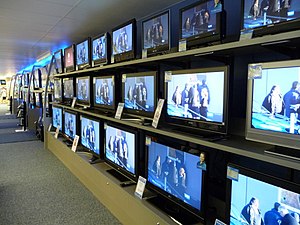 Story of movie Television :
Story of movie Television : 